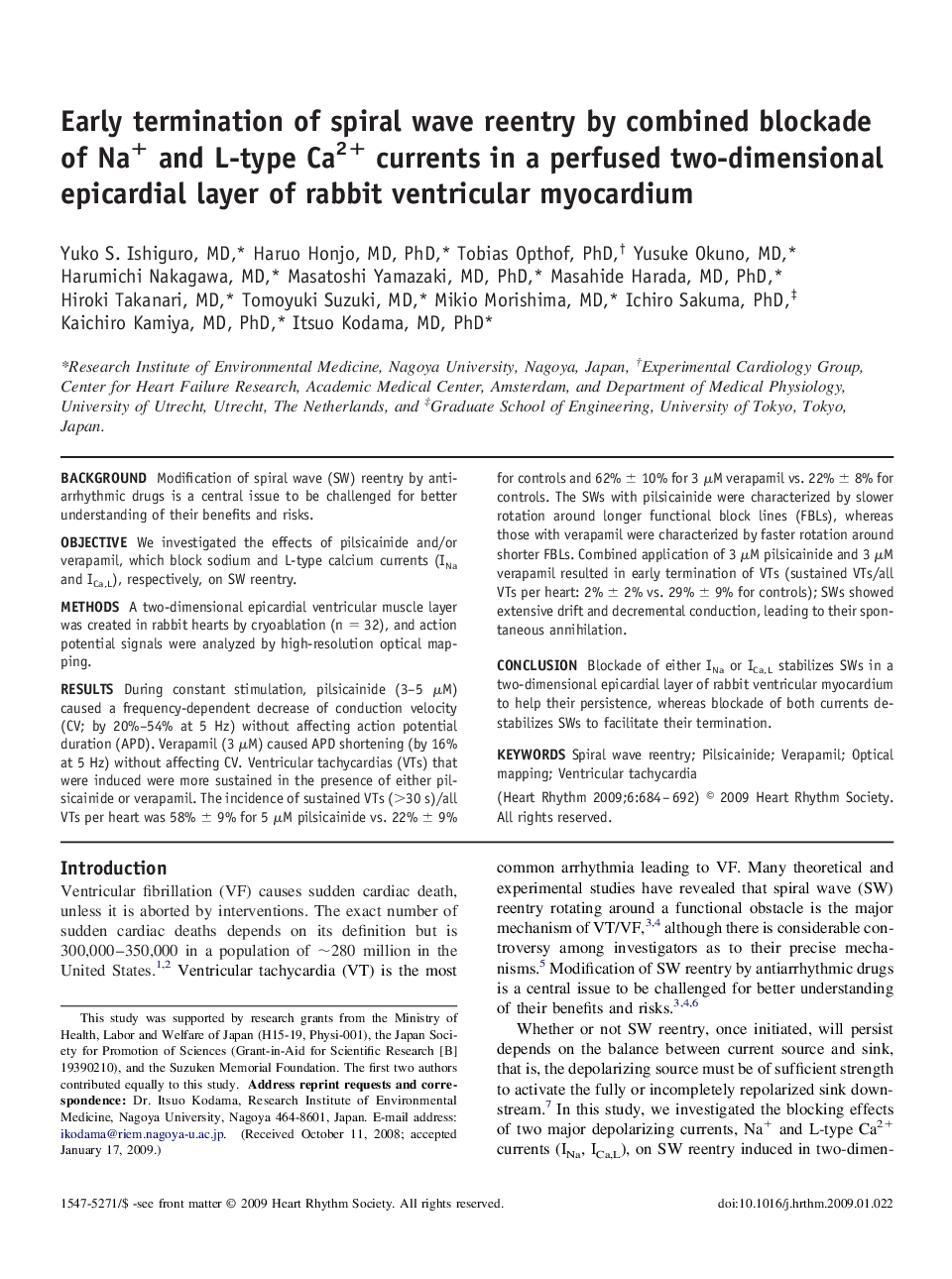| Article ID | Journal | Published Year | Pages | File Type |
|---|---|---|---|---|
| 2923653 | Heart Rhythm | 2009 | 9 Pages |
BackgroundModification of spiral wave (SW) reentry by antiarrhythmic drugs is a central issue to be challenged for better understanding of their benefits and risks.ObjectiveWe investigated the effects of pilsicainide and/or verapamil, which block sodium and L-type calcium currents (INa and ICa,L), respectively, on SW reentry.MethodsA two-dimensional epicardial ventricular muscle layer was created in rabbit hearts by cryoablation (n = 32), and action potential signals were analyzed by high-resolution optical mapping.ResultsDuring constant stimulation, pilsicainide (3–5 μM) caused a frequency-dependent decrease of conduction velocity (CV; by 20%–54% at 5 Hz) without affecting action potential duration (APD). Verapamil (3 μM) caused APD shortening (by 16% at 5 Hz) without affecting CV. Ventricular tachycardias (VTs) that were induced were more sustained in the presence of either pilsicainide or verapamil. The incidence of sustained VTs (>30 s)/all VTs per heart was 58% ± 9% for 5 μM pilsicainide vs. 22% ± 9% for controls and 62% ± 10% for 3 μM verapamil vs. 22% ± 8% for controls. The SWs with pilsicainide were characterized by slower rotation around longer functional block lines (FBLs), whereas those with verapamil were characterized by faster rotation around shorter FBLs. Combined application of 3 μM pilsicainide and 3 μM verapamil resulted in early termination of VTs (sustained VTs/all VTs per heart: 2% ± 2% vs. 29% ± 9% for controls); SWs showed extensive drift and decremental conduction, leading to their spontaneous annihilation.ConclusionBlockade of either INa or ICa,L stabilizes SWs in a two-dimensional epicardial layer of rabbit ventricular myocardium to help their persistence, whereas blockade of both currents destabilizes SWs to facilitate their termination.
